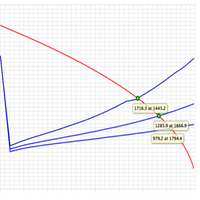OptiFrac
Brief
optiFrac is a fracture design optimization tool.
For the given set of reservoir and propane properties it calculates maximum achievable well productivity index and required fracture geometry.
Typical applications
- Single Well Fracture Design
- Design Sensitivity
Main features
- Plot of JD as a function of CfD and Ix as parameter.
- Plot of JD as a function of CfD and Np as parameter.
- Design optimization curve which corresponds to the maximum JD values for different Np.
- Design Optimum Point at which the dimensionless productivity index, JD, is maximized for the given proppant, fracture and reservoir parameters.
- Physical constraints envelope.
- Proppant library with predefined proppant properties.
- Optimum fracture design parameters (dimensionless productivity index, fracture conductivity, fracture half length, fracture width, fracture penetration).
Interface features
- Save and share references to saved models with colleagues
- Last saved model on current computer and browser is automatically opened
- Choose between Metric units and US oilfield units
- Save as image and print plot by means of chart context menu (button at the upper-right corner of chart)
- Download report in pdf format containing input parameters, calculated values and plot
- Select and copy results to Excel or other application
Used correlations
| Type of problem | Correlation | Reference |
|---|---|---|
|
Oil well VLP |
Hagedorn, A. R., & Brown, K. E. (1965). Experimental study of pressure gradients occurring during continuous two-phase flow in small-diameter vertical conduits. Journal of Petroleum Technology, 17(04), 475-484. | |
|
Gas well VLP |
Gray, H. E. (1974). Vertical flow correlation in gas wells. User manual for API14B, subsurface controlled safety valve sizing computer program. | |
|
Dry gas VLP |
Cullender, M.H. and Smith, R.V. 1956. Practical Solution of Gas-Flow Equations for Wells and Pipelines with Large Temperature Gradients. Trans., AIME 207: 281. | |
|
Oil well inflow |
Composite IPR based – Vogel equations taking into account water |
Kermit E. Brown "The Technology of Artificial Lift Methods" Vol. 4 Production Optimization of Oil and Gas Wells by Nodal System Analysis, p. 30, section 2.227.1 |
|
Gas well inflow – backpressure equation |
Rawlins and Schellhardt |
Rawlins, E.L. and Schellhardt, M.A. 1935. Backpressure Data on Natural Gas Wells and Their Application to Production Practices, Vol. 7. Monograph Series, USBM. |
|
Gas well inflow – pseudo-pressure equation using Jd and kh values |
Real-gas pseudopressure equation |
See for example: Ahmed, T., & McKinney, P. (2011). Advanced reservoir engineering. Gulf Professional Publishing. |
|
Turner |
Turner, R. G., Hubbard, M. G., and Dukler, A. E. (1969) “Analysis and Prediction of Minimum Flow Rate for the Continuous Removal of Liquids from Gas Wells,” Journal of Petroleum Technology, Nov. 1969. pp. 1475–1482. | |
|
Guidelines from API RP14E |
Mokhatab S, Poe WA, Speight JG (2006) "Handbook of Natural Gas Transmission and Processing", Section 11.6 - Design Considerations on sales gas pipelines, subsection 11.6.1 - Line Sizing Criteria, Elsevier, 2006. |
PVT correlations are the same as in PVT tool.

